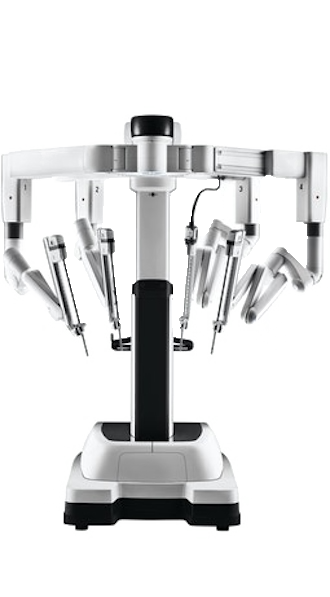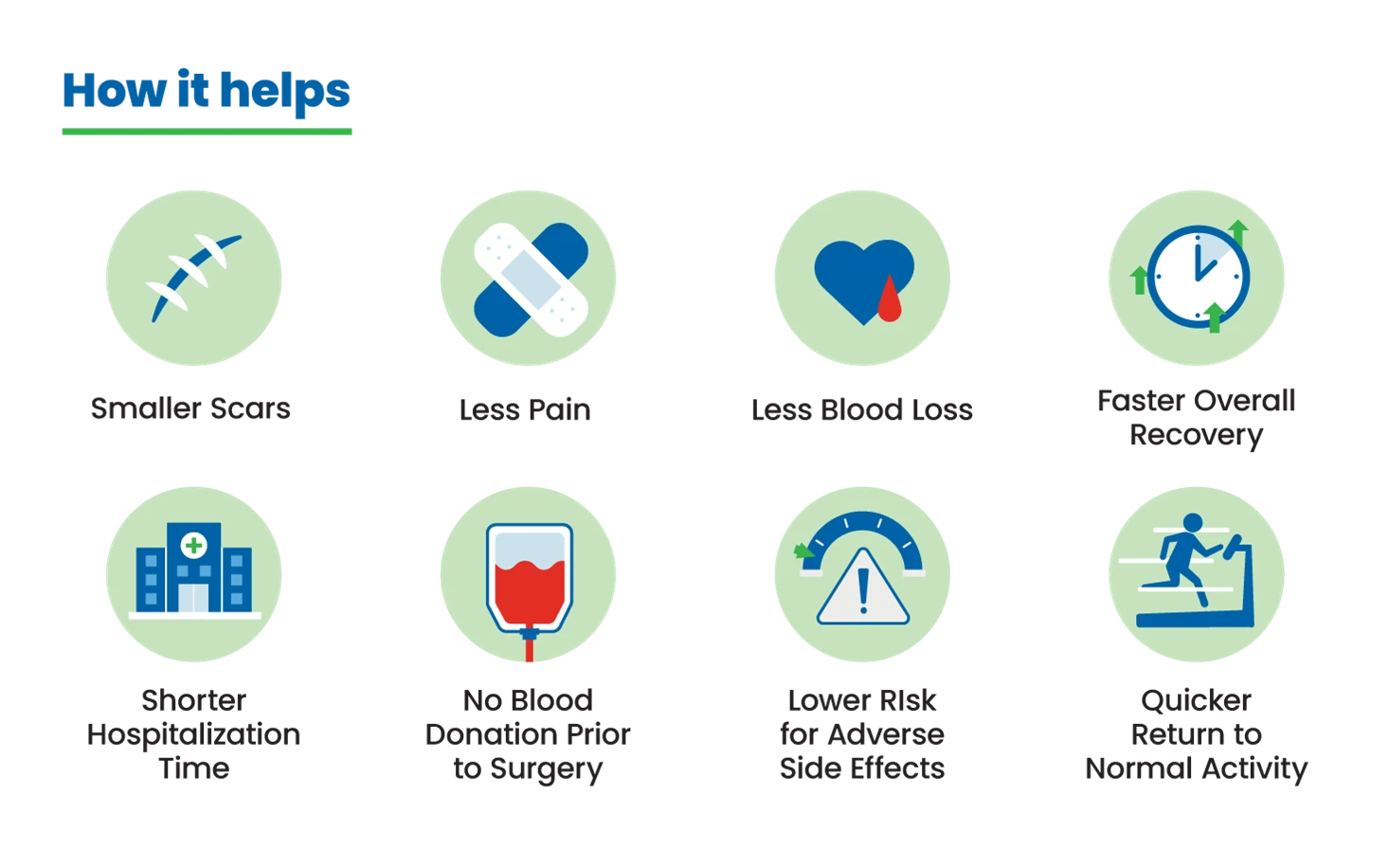

Robotic surgery, also known as robotic-assisted surgery, is a type of minimally invasive surgery that uses robotic systems to assist surgeons in performing complex procedures with greater precision, flexibility, and control than traditional techniques.
Robotic surgery involves a few components that include:

The Mako Robotic-Arm Assisted Surgery System combines advanced imaging technology with robotic assistance, enabling orthopaedic surgeons to create customised surgical plans tailored to each patient’s unique anatomy.
This system supports a range of robotic orthopaedic surgeries, including Robotic Knee Replacement (both Partial and Total Knee Replacement or Arthroplasty) as well as Hip Arthroplasty.



The da Vinci Xi system’s central feature is its 3D high-definition visualisation, which provides our surgeons with an exceptional view of the surgical field. This crystal-clear visualisation allows for precise navigation through complex anatomy, enabling surgeons to perform even the most intricate procedures with confidence and ease.
The versatility of the da Vinci Xi system extends across a wide range of surgical specialties, including Urology, Gynaecology, General Surgery, Thoracic Surgery, and ENT. Notably, urologic surgeries, such as Robotic Prostate Surgery (Robotic Prostatectomy), leverage the advanced capabilities of the da Vinci Xi system.
Having a robotic system is like having a highly advanced set of surgical tools at the surgeon’s fingertips. The robotic arms are equipped with miniaturised instruments that can move with greater flexibility and precision than the human hand.
For example, through CT-based 3D modelling of bone anatomy, surgeons can use the Mako System to create a personalised surgical plan and identify the desired course of surgery and alignment based on each patient’s unique anatomy.
One key advantage of surgical robotics is its ability to perform minimally invasive surgery. Instead of large incisions, surgeons make a few small openings, reducing the impact on the patient’s body and often resulting in quicker recovery times.
Surgeons using surgical robotics have access to high-definition, 3D visualisation of the surgical site. This depth of view allows for a detailed and magnified view of the anatomy, enabling more accurate and controlled movements during the procedure.
Traditionally, surgeons rely on 2D imaging to guide their movements and identify critical structures during surgery. With the da Vinci System, surgeons overcome challenges in depth perception and spatial awareness with real-time three-dimensional view of the surgical site.
The robotic arms are designed to mimic the natural range of motion of the human hand and wrist but with a greater degree of freedom. This enhanced manoeuvrability allows surgeons to reach areas that might be challenging with traditional surgical techniques.
Studies have shown that surgeries performed with surgical robotics can lead to reduced blood loss, fewer complications, and shorter hospital stays. This can contribute to better overall outcomes and a faster return to daily activities for patients.

At the heart of healthcare is the commitment to putting patients first. This dedication drives the medical technology sector to continually innovate and create cutting-edge equipment, designed to support the compassionate care provided by hospitals and healthcare professionals. The goal is simple: to improve surgical outcomes for every patient.
Robotic surgical systems, such as the da Vinci System and Mako SmartRobotics, enable minimally invasive surgical techniques, allowing surgeons to operate with greater insight and less disruption to the body. These smaller incisions result in reduced pain and faster recovery, helping you get back to your best more quickly.
Additionally, robotic surgical systems enhance your surgeon's abilities. Picture a surgical assistant that offers unmatched precision, dexterity, and advanced technology, enabling surgeons to perform procedures with greater control and accuracy.
Robotic surgery is gaining traction across various surgical specialties. The modality offers better visualisation, dexterity, and ergonomics over conventional surgery while also providing benefits of minimally invasive surgery. The issue of cost and time spent getting used to the system can be ameliorated with technological advances and increased global uptake. Improvements in tactile feedback technology (haptics) and more research on the benefits of robotics compared to conventional surgery are vital to support its evolution in practice.

